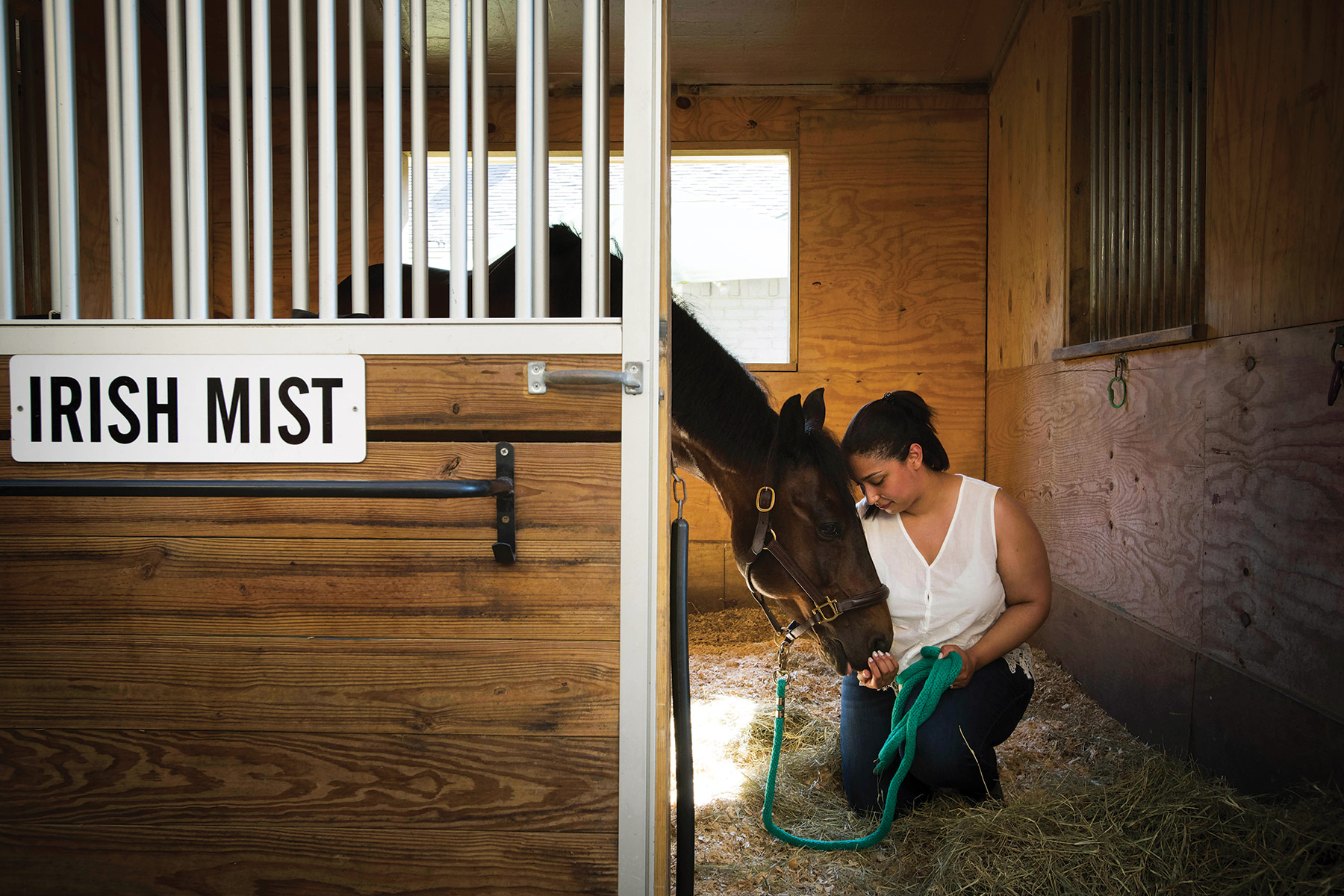For the August issue of D Magazine, Jeff Bowden wrote a story about a girl who loved and lost a horse and how the two were reunited. It’s now online. As Jeff and I talked about the story and he worked his way through the writing, he kept bringing up parallels between his story and Black Beauty. In fact, in the first draft of his story, Jeff included a section about that book, which was written by Anna Sewell. He decided the structure didn’t work and cut the material. Here it is, resurrected:
—
I.
Anna Sewell wrote only one book in her lifetime: Black Beauty. Since its publication in 1877, Black Beauty has sold approximately 50 million copies, placing it on every all-time best-seller list, located somewhere between various Harry Potters and Charlotte’s Web. In case you’ve seen only film or television versions, Black Beauty, in spite of its grandmotherly prose, four-page chapters, and undisciplined use of exclamation points, is nothing less than a Banksy mural: art as poisoned-tipped spear. The actual title of Sewell’s book is Black Beauty: His grooms and companions: the autobiography of a horse, translated from the original equine by Anna Sewell. Black Beauty is ostensibly a book written by a horse about us.
II.
Sewell didn’t write Black Beauty for children. She especially didn’t write it for young girls who make up the bulk of Black Beauty’s readership. Sewell, who never married, never had children, was paid £40 for the manuscript and received no royalties. But her goal was never financial. Sewell wanted her “little book” to change the way adults, particularly men, treated animals.
The first American version of Black Beauty carried an additional subtitle: The Uncle Tom’s Cabin of the Horse, and was published by the American Humane Education Society. According to Sewell’s biographer, Adrienne Gavin, Sewell saw the cruelty inflicted on working horses every day of her life. She lived around horses. A childhood ankle injury left her virtually lame; she needed horses to get around. Perhaps Sewell’s various physical infirmities gave her insights into the vulnerability of working animals. Sewell was bed-ridden for the five years she needed to write Black Beauty and died only five months after its publication, most likely from lupus.
III.
Black Beauty describes a life, which follows the inexorable downward trajectory of a horse in Victorian England: from carriage horse, to cab horse, to cart horse, to job horse, to the charnel house. Horses were worked to exhaustion, beaten, and fed as cheaply as possible. Imagine the life of an airport rental car and you’ve got the picture. Horses were levers of industry and trophies of the rich. In particular, Sewell objected to the bearing rein, a leather strap that pulled the head of a carriage horse up at the nose, thereby arching the horse’s neck. It was considered fashionable to drive a pair of horses with matched, arched necks regardless of the fact that the bearing rein restricted the horse’s air supply. The horse couldn’t put its head down as it naturally would in order to pull a load. The strain shortened horses lives. It hurt.
IV.
In Sewell’s England, horse-trading was more like Texas hold ’em or close-in magic. The lack of record keeping made it easy to cheat. Traders put sharp objects into the hooves of horses’ good legs to make limps even and thus undetectable. Traders put ginger or other spices into horses’ anuses to force the horse to hold its tail higher. It’s not much different today. Texas writer Ben Green wrote a whole book chronicling his misadventures of buying and selling horses. The friend who gave it to me comes from a family who bought, trained, and sold horses in Tennessee. He once accompanied his uncle to look at a horse. They didn’t buy it. The seller had freshened the horse’s spots with paint. His brush: an apricot pit.
V.
Sewell’s family kept a pet horse named Bessie. Sewell’s niece believed Bessie served as the model for Black Beauty. The story ends on a happy note, much like Irish Mist’s life. “My ladies have promised that I shall never be sold, and so I have nothing to fear; and here my story ends. My troubles are all over, and I am home; and often before I am quite awake, I fancy I am still in the orchard at Birtwick, standing with my old friends under the apple trees.” —Jeff Bowden






